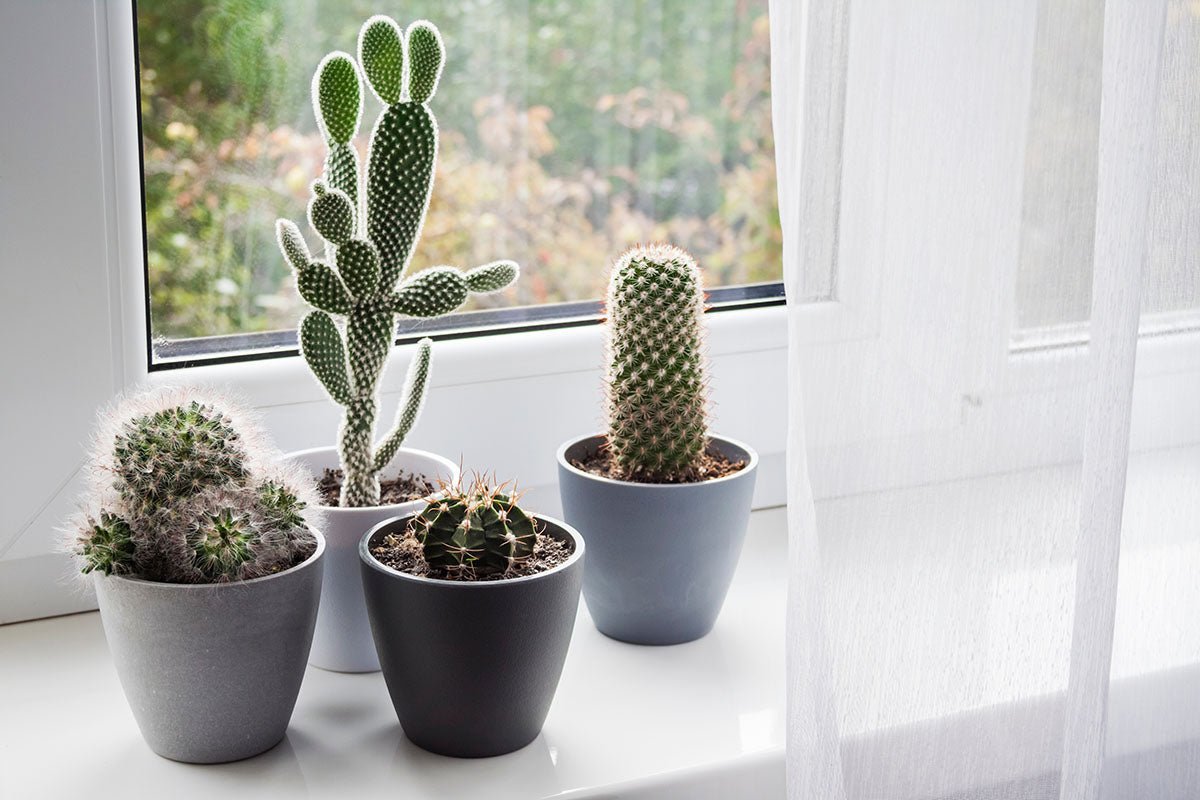Table of Contents
- Introduction
- The Fascinating World of Cacti
- What are Cacti?
- Evolution and Adaptations
- Biodiversity of Cacti
- The Prickly Image: Cacti in Popular Culture
- Cacti as Symbols
- Cacti in Art and Design
- Cacti in Movies and Literature
- Cacti as Survivalists: Remarkable Adaptations
- Water Storage Mechanisms
- Photosynthesis in Cacti
- Reducing Surface Area to Prevent Water Loss
- Cactus Species Around the World
- North American Cacti
- South American Cacti
- African Cacti
- Asian Cacti
- Cacti in Gardens: A Growing Trend
- Popular Cactus Varieties for Gardens
- Caring for Cacti at Home
- Decorating with Cacti: Tips and Ideas
- Medicinal Uses of Cacti
- Traditional Healing Practices
- Modern Medical Research
- Safety and Precautions
- Myths and Misconceptions about Cacti
- Are All Cacti Poisonous?
- Do Cacti Always Bloom?
- Are Cacti Slow Growing?
- Environmental Importance of Cacti
- Ecosystem Support
- Threats to Cactus Habitats
- Conservation Efforts
- Cactus Poaching: An Illegal Trade
- The Black Market for Cacti
- Consequences of Cactus Poaching
- Combating Cactus Trafficking
- Cacti and Wildlife
- Cacti as Habitat
- Animals and Cacti Mutualism
- Cacti in Pollination
- Beyond Prickly: Uncommon Cactus Varieties
- Cacti with Edible Fruits
- Colorful and Rare Cacti
- Giant and Dwarf Cacti
- The Future of Cacti
- Facing Climate Change
- Cultivating Cacti Awareness
- Cacti in Sustainable Living
- Conclusion
- FAQs
Introduction
Cacti, with their distinctive appearance and reputation for being resilient desert plants, have long captivated human imagination. While they may be commonly associated with arid landscapes and Western movies, there is much more to these enigmatic plants than meets the eye. This article explores the world of cacti, delving into their fascinating adaptations, cultural significance, environmental importance, and the controversial issue of cactus poaching. Join us on this journey to uncover the truth about cacti and whether they truly are just prickly pals.
The Fascinating World of Cacti
What are Cacti?
Cacti are succulent plants belonging to the family Cactaceae. They are characterized by their unique ability to store water in their stems, leaves, or roots, enabling them to survive in arid environments.
Evolution and Adaptations
Over millions of years, cacti have evolved specialized features to survive in harsh conditions. Their thick, waxy skin and spines help reduce water loss and protect against predators.
Biodiversity of Cacti
Cacti exhibit an incredible diversity of shapes, sizes, and adaptations. From the towering saguaros of North America to the tiny pebble-like living stones of Africa, each cactus species has its own story.

The Prickly Image: Cacti in Popular Culture
Cacti as Symbols
In various cultures, cacti symbolize endurance, protection, and adaptability. Their image is often used in art, logos, and even as a representation of resilience in human life.
Cacti in Art and Design
Artists and designers frequently draw inspiration from the striking shapes and textures of cacti, incorporating them into their work to create unique and visually appealing pieces.
Cacti in Movies and Literature
Cacti have made appearances in numerous films, books, and cartoons. From the comedic to the adventurous, these appearances often add an element of intrigue and mystery.

Cacti as Survivalists: Remarkable Adaptations
Water Storage Mechanisms
Cacti have developed ingenious strategies to store water for extended periods, enabling them to survive in drought-prone regions.
Photosynthesis in Cacti
Cacti have evolved a modified form of photosynthesis called crassulacean acid metabolism (CAM), allowing them to open their stomata at night to conserve water.
Reducing Surface Area to Prevent Water Loss
Many cacti have reduced their surface area, minimizing the area from which water can escape through transpiration.
Cactus Species Around the World
North American Cacti
The vast deserts of North America are home to numerous cactus species, each with unique adaptations to thrive in the region's challenging conditions.
South American Cacti
South America boasts a wide array of cacti, from the iconic Andean cacti to the epiphytic species found in the rainforests.
African Cacti
Contrary to popular belief, cacti can be found in Africa, where they have adapted to various habitats, from deserts to savannas.
Asian Cacti
Asia is not devoid of cacti; it hosts some unique species that have adapted to the continent's diverse landscapes.

Cacti in Gardens: A Growing Trend
Popular Cactus Varieties for Gardens
Gardening enthusiasts are increasingly incorporating cacti into their landscapes due to their low maintenance and striking beauty.
Caring for Cacti at Home
Proper care and attention are essential for cacti to thrive in home gardens. This section provides practical tips for successful cultivation.
Decorating with Cacti: Tips and Ideas
Cacti's aesthetic appeal has led to their use in interior decor, ranging from small potted plants to large statement pieces.
Medicinal Uses of Cacti
Traditional Healing Practices
Indigenous cultures have long recognized the medicinal properties of certain cacti, using them to treat various ailments.
Modern Medical Research
Scientific studies are investigating the potential of cacti compounds in modern medicine, from anti-inflammatory agents to cancer treatments.
Safety and Precautions
While some cacti have therapeutic uses, others can be toxic if mishandled. Understanding the safety guidelines is crucial.
Myths and Misconceptions about Cacti
Are All Cacti Poisonous?
While cacti are often associated with their sharp spines, one common misconception is that all cacti are poisonous. In reality, the majority of cacti species are not toxic to humans or animals. However, there are some exceptions, and it is essential to exercise caution when handling unfamiliar cacti.
Do Cacti Always Bloom?
Contrary to popular belief, not all cacti species bloom, and those that do may have specific conditions for flowering.
Are Cacti Slow Growing?
While some cacti grow slowly, others can experience rapid growth under the right conditions.
Environmental Importance of Cacti
Ecosystem Support
Cacti play a vital role in their native ecosystems, providing shelter, food, and water sources for a variety of wildlife, including birds, insects, and mammals.
Threats to Cactus Habitats
Human activities, such as urbanization and agriculture expansion, pose significant threats to cactus habitats, leading to habitat loss and fragmentation.
Conservation Efforts
Conservation organizations and governments are taking steps to protect cacti and their habitats through various initiatives and legal measures.
Cactus Poaching: An Illegal Trade
The Black Market for Cacti
Cactus poaching has become a lucrative illegal trade, driven by the demand for rare and exotic species in the international market.
Consequences of Cactus Poaching
The illegal trade in cacti not only threatens the survival of endangered species but also disrupts ecosystems and contributes to biodiversity loss.
Combating Cactus Trafficking
Law enforcement agencies, NGOs, and concerned individuals are working together to combat cactus poaching and raise awareness about its consequences.

Cacti and Wildlife
Cacti as Habitat
Cacti provide essential habitats for various animal species, offering shelter, nesting sites, and food sources.
Animals and Cacti Mutualism
Several animal species have developed symbiotic relationships with cacti, benefiting both parties in their struggle for survival.
Cacti in Pollination
Many cacti species rely on specific pollinators, such as bats and insects, to reproduce, making them vital players in local ecosystems.
Beyond Prickly: Uncommon Cactus Varieties
Cacti with Edible Fruits
Some cacti produce delicious and nutritious fruits that have been used as a food source by indigenous communities for centuries.
Colorful and Rare Cacti
There are cacti species with stunning and vibrant colors, making them prized by collectors and enthusiasts.
Giant and Dwarf Cacti
From towering giants to miniature marvels, cacti come in a variety of sizes, each with its unique charm.
The Future of Cacti
Facing Climate Change
Climate change poses a significant threat to cacti and their habitats, requiring proactive measures to protect these vulnerable plants.
Cultivating Cacti Awareness
Promoting awareness and education about cacti is crucial for their conservation and the appreciation of their ecological value.
Cacti in Sustainable Living
Cacti's drought-resistant properties make them an attractive option for sustainable gardening and agriculture in water-scarce regions.
Conclusion
Cacti have proven themselves to be more than just prickly pals; they are remarkable survivors and crucial contributors to the ecosystems they inhabit. From their intriguing adaptations to their cultural significance and medicinal uses, cacti have earned a well-deserved place in human history and our hearts. However, the threats they face, such as habitat destruction and poaching, demand immediate attention and conservation efforts. By protecting cacti and their habitats, we can ensure that these extraordinary plants continue to thrive and inspire future generations.
FAQs
-
Are all cacti prickly?
- While most cacti have spines, some species have evolved to be nearly spineless for various ecological reasons.
-
Can I grow cacti indoors?
- Yes, many cactus species can thrive indoors if provided with the right conditions and care.
-
Are cacti suitable for beginners in gardening?
- Yes, cacti are relatively low-maintenance plants, making them an excellent choice for beginners.
-
Can you eat cactus fruits?
- Yes, certain cactus species produce edible fruits that are enjoyed in traditional cuisines.
-
Are cacti endangered?
- Some cactus species are endangered due to habitat destruction and illegal poaching, underscoring the need for conservation efforts.





